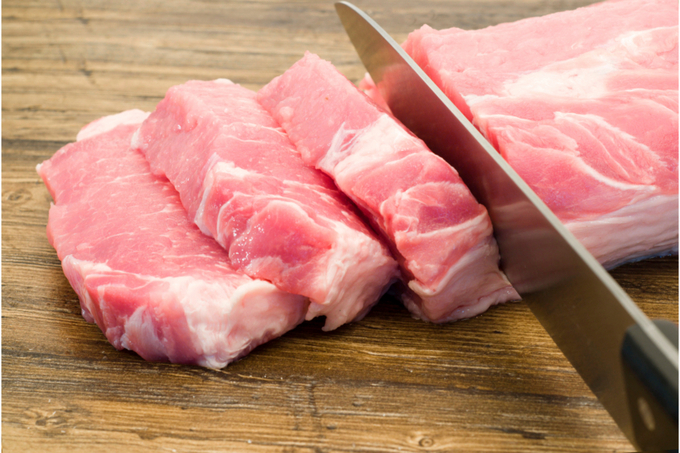November 22, 2025 | 18:50 GMT +7
November 22, 2025 | 18:50 GMT +7
Hotline: 0913.378.918
November 22, 2025 | 18:50 GMT +7
Hotline: 0913.378.918
If the upward trend continues, pork may become the country’s most popular meat.

The market expects a rise in pork consumption by 1.6 kilogrammes in 2024, which will be the strongest one-year increase in the past decade. Photo: Canva
Russian pork consumption has been steadily rising in the past decade, said Andrey Dalnov, senior analyst with state-owned agricultural bank Rosselhozbank. Since 2014, when an average Russian citizen ate 23.4 kilogrammes of pork per year, the figure surged by nearly a third. Over the past decade, the pig industry also showed outstanding growth, expanding output by 56%, Dalnov estimated.
The market expects a rise in pork consumption by 1.6 kilogrammes in 2024, which will be the strongest one-year increase in the past decade. In 2022, for comparison, pork consumption climbed by a moderate 0.8 kilogrammes to 29.6 kilogrammes and in 2023 by another 0.7 kilogrammes to 30.3 kilogrammes, as estimated by Rosselhozbank.
Dalnov is confident that the growth in pork consumption will contribute to the general improvement of the Russian population’s health. “Pork has an optimal content of amino and fatty, vitamins and microelements per calorie. The top-10 countries in the world in terms of life expectancy show relatively high pork consumption levels.”
Dalnov said that pork consumption in Russia follows an upward trajectory thanks to an increase in the population’s incomes and an expansion in supply.
Sergey Yushin, chairman of the Russian Meat Association, attributed the rise in meat consumption in Russia in recent years to a rise in incomes among the poor part of the population, in particular thanks to huge “social payments.”
Total meat consumption per capita in Russia will reach 83 kilogrammes in 2023, also the highest level ever, Dalnov forecasted.
In 2024, pork production in Russia is expected to add another 350,000 tonnes, almost reaching the output of 5 million tonnes in live weight, Rosselhozbank calculated.
Growing pork consumption threatens broiler meat’s position as the leading source of protein in Russia. In 2023, Russian broiler meat consumption per capita was estimated at 35 kilogrammes. This figure remained stable during the last few years and even occasionally slightly decreased under the pressure of pork, which has become more competitive in prices.
“I believe that in 2024, in the Russian meat basket, pork will come close to the leader – broiler,” Dalnov stated.
(PP)

(VAN) In a new study published in Trends in Biotechnology, researchers used a gene-editing technology called CRISPR to increase a fungus's production efficiency and cut its production-related environmental impact by as much as 61%- all without adding any foreign DNA.

(VAN) A top official in Beijing’s Cop delegation says China is committed to clean energy – but US’s absence is a problem.

(VAN) The Bangsamoro region’s inflation rate rose slightly to –1.3 percent in October 2025 from –1.5 percent in September, the Philippine Statistics Authority (PSA-BARMM) reported.

(VAN) FAO-led report says protecting and restoring forests is crucial to boosting climate-resilient agriculture, rural livelihoods and global food and water security.

(VAN) Flagship partnership secures additional GBP 16.9 million to strengthen forest monitoring, transparency and country support to 2030.

(VAN) After a turbulent year for international development, the aid and assistance landscape has shifted, with donors rethinking how, where and why they support sustainable development.

(VAN) A new tool for measuring the economic value of farm animal welfare improvements has been developed, potentially transforming how consumers, retailers and the government evaluate animal welfare policies.